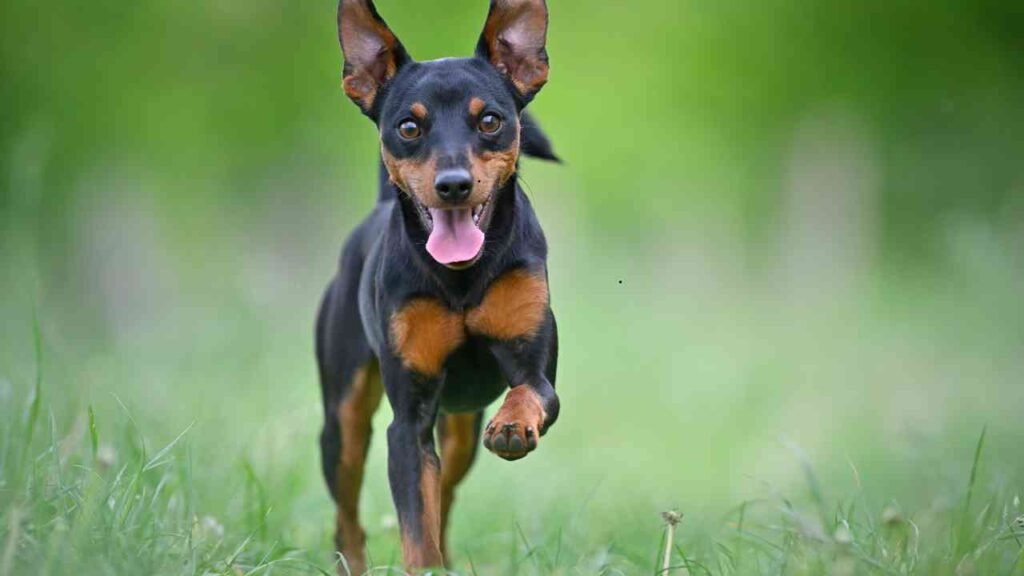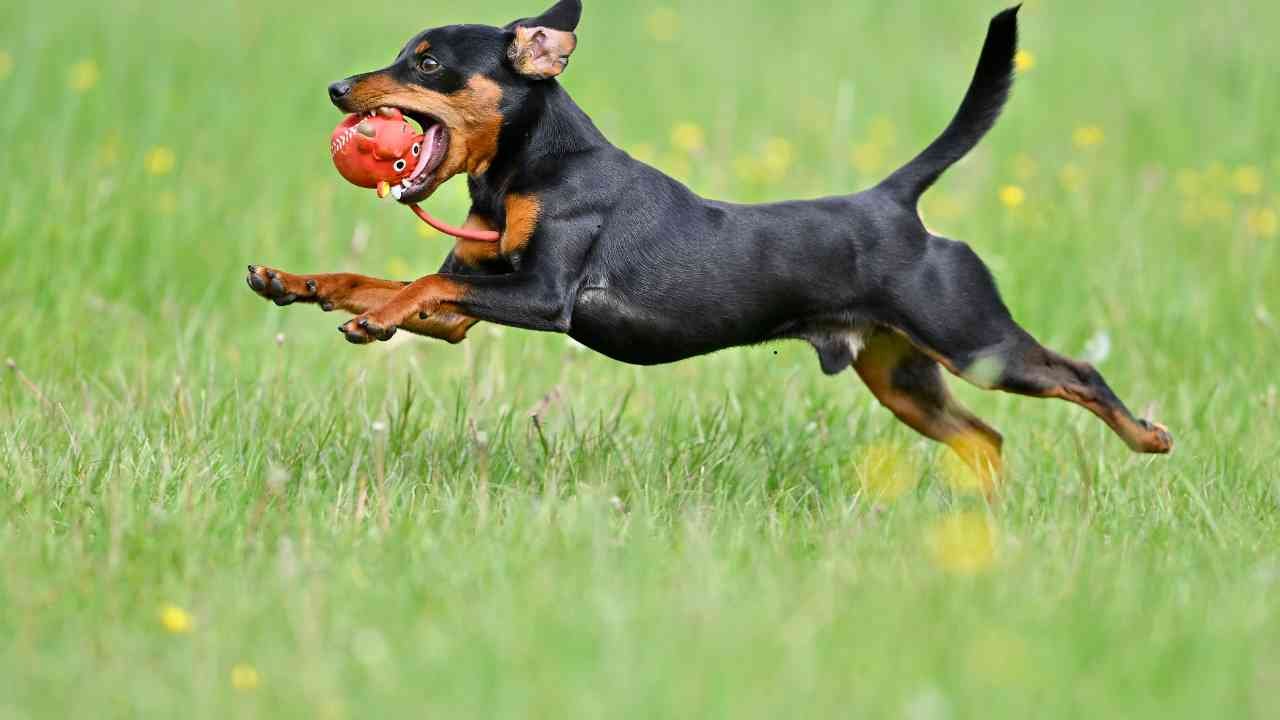Topics Covered in This Blog Post
- Introduction
- Breed Overview of German Pinscher
- History & Origin of German Pinscher
- German Pinscher Physical Appearance
- Temperament & Behavior of German Pinscher
- Training Tips for German Pinscher
- Exercise Needs of German Pinscher
- Diet & Nutrition for German Pinscher
- Health & Lifespan of German Pinscher
- Is German Pinscher Right for You?
- FAQs about German Pinscher
Introduction
The German Pinscher is a bold and elegant dog breed known for its intelligence, loyalty, and smooth, athletic build. Often seen as the middle ground between the Miniature Pinscher and the Doberman, this breed combines alertness with a loving nature, making it a great companion for active families and experienced dog owners. In this article, we’ll explore everything you need to know about the German Pinscher—from its rich history to care, training, and more.
Breed Overview of German Pinscher

The German Pinscher is a medium-sized breed known for its sharp instincts, muscular body, and short, shiny coat. Originally bred as a working dog, this breed is alert, energetic, and fearless—traits that make it a natural watchdog. Though protective, the German Pinscher is not aggressive when properly socialized. It thrives in environments where it gets mental stimulation, physical exercise, and consistent training. This breed is best suited for owners who are confident and committed to regular engagement.
History & Origin of German Pinscher
The German Pinscher dates back to the 1800s in Germany and was originally bred to control vermin on farms. It shares common ancestry with the Schnauzer and is considered one of Germany’s oldest native breeds. After nearly going extinct following World War II, dedicated breeders worked to revive the German Pinscher population. The breed was officially recognized by the American Kennel Club (AKC) in 2003. Today, it is cherished for its intelligence, loyalty, and athletic nature.
German Pinscher Physical Appearance
| Feature | Description |
|---|---|
| Size | Medium |
| Height | 17–20 inches (male & female) |
| Weight | 25–45 pounds |
| Coat | Short, smooth, and glossy |
| Coat Colors | Black and tan, red, blue, fawn |
| Eyes | Dark, oval-shaped |
| Ears | Naturally floppy or cropped |
| Build | Muscular, compact, and well-balanced |
| Lifespan | 12–14 years |
| Special Features | Alert expression, docked tail common |
Temperament & Behavior of German Pinscher
The German Pinscher is a confident and independent thinker. It’s known for being loyal to its family but reserved with strangers. This breed is extremely alert and makes an excellent watchdog. It enjoys being mentally challenged and can become bored without stimulation, leading to undesirable behaviors. While affectionate and playful with its loved ones, it may show a stubborn streak—requiring consistent boundaries. With early socialization, the German Pinscher does well with children and other pets, especially when raised together.
Training Tips for German Pinscher
Training a German Pinscher requires firmness, patience, and positive reinforcement. Start socialization early to prevent overprotectiveness or wariness of strangers. Use reward-based methods—this breed does not respond well to harsh corrections. Engage their intelligent mind through puzzle toys, obedience classes, and trick training. Keep sessions short and varied to prevent boredom. Crate training and consistent daily routines help shape a well-behaved, confident dog.
Exercise Needs of German Pinscher
This breed is highly energetic and requires at least 60 minutes of daily exercise. Long walks, runs, fetch games, and agility training are ideal for the German Pinscher. Without proper activity, it may develop behavioral problems such as digging or barking. Mental enrichment is just as important—consider puzzle feeders, interactive toys, or scent-based games. A tired German Pinscher is a well-behaved one.
Diet & Nutrition for German Pinscher
Feed your German Pinscher high-quality dog food that matches its age, size, and activity level. Look for a protein-rich diet with healthy fats to support its muscular build and energy demands. Split meals into two portions per day to prevent overeating. Omega-3 fatty acids and vitamins A and E support skin and coat health. Always provide fresh water and consult a vet for specific dietary needs or allergies.
Health & Lifespan of German Pinscher
The German Pinscher is a generally healthy breed with a lifespan of 12–14 years. However, like all breeds, it’s prone to certain conditions, including:
- Hip dysplasia
- Cataracts
- Heart disease
- Von Willebrand’s disease (a bleeding disorder)
Routine vet visits, vaccinations, and preventive care can help catch issues early. Keeping your dog at a healthy weight through diet and exercise is vital for long-term health.
Is German Pinscher Right for You?
The German Pinscher is best suited for active, experienced dog owners who can dedicate time to training and exercise. If you want a loyal, intelligent, and alert companion with strong watchdog instincts, this breed may be perfect for you. However, it’s not ideal for first-time owners or homes where dogs are left alone for long periods. The German Pinscher needs structure, engagement, and affection to thrive.
FAQs about German Pinscher
Q: Are German Pinschers good family dogs?
Yes, with proper training and socialization, they are affectionate and loyal with family members.
Q: Do German Pinschers bark a lot?
They are naturally alert and may bark to signal something unusual, but excessive barking can be curbed with training.
Q: Are German Pinschers hypoallergenic?
No, they are not considered hypoallergenic, although their short coat sheds minimally.
Q: Can a German Pinscher live in an apartment?
Yes, if given enough daily exercise and mental stimulation, they can adapt to apartment living.
Q: How often should I groom my German Pinscher?
They require minimal grooming—brushing once a week and occasional baths are usually enough.
Explore More Breeds and Conduct Further Research
